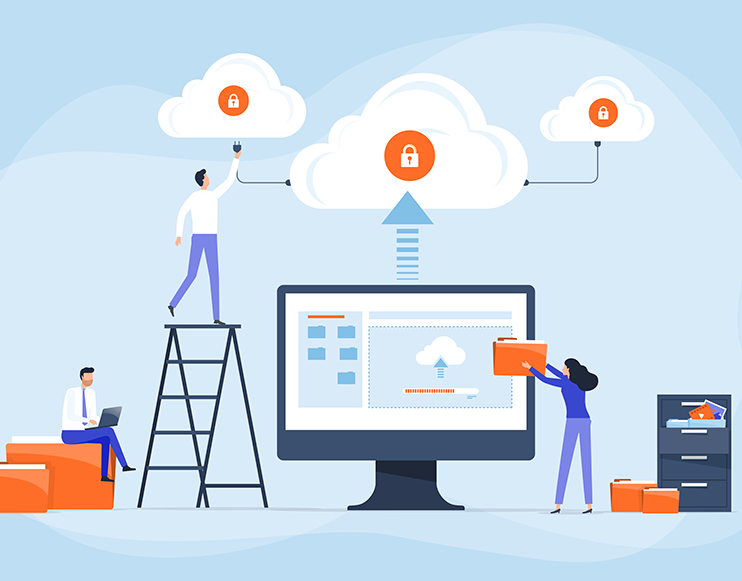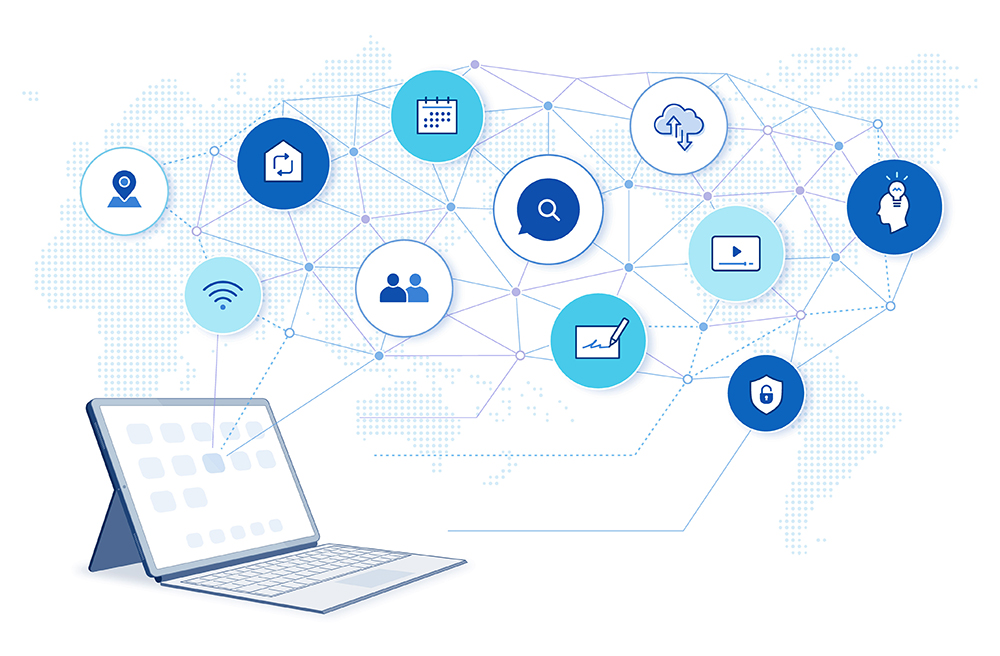Apps are the spark that’s inspiring organizations to embark on a digital transformation, moving from analog to digital platforms and services. Enterprise application software enables companies to significantly improve business operations and profitability and is the key to success in our digital economy.
These apps, along with corporate data, are moving to public, private and hybrid Clouds. Industry analyst firm Gartner estimates that more than half of enterprise IT spending in key market segments will shift to the Cloud by 2025.
However, to ensure a successful conversion process with minimal disruption, companies undergoing a digital transformation have important things to consider ensuring a successful outcome. In our Digital Transformation blog series, we discuss the importance of network capabilities, connectivity, and Cloud services.
The following information will help you assess enterprise applications, business policy management and prioritization, as factors for your organization’s Digital Transformation migration.
Business policy management and prioritization
Enterprise applications have different network requirements based upon their functionality.
Real time applications. These have very specific performance requirements that relate to latency, packet loss and jitter. Applications such as voice and video conferencing can’t be buffered and traffic can’t be stored. If the packet can’t be delivered right away, or comes in late, there’s no point sending it at all. Real time applications may not require high bandwidth, but they do require specific performance standards.
Transactional applications. These can be buffered, and delayed, stored and retransmitted, which happens quite often in the Internet, and all will be reassembled at the other end in a large file transfer. Although transactional applications such as downloading a movie to watch later or simply transferring a large file are not latency sensitive, they still require large bandwidth.
Typically packets of real time applications must be forwarded ahead of the transactional applications. When two packets arrive at the same time, they both can’t be processed at the same time. One has to have priority.
The GPC SD-WAN platform can identify more than 3,000 applications, know the requirements of each individual application and apply a policy.

Considerations for the Apps assessment
- What are the apps? Conduct an inventory. Salesforce, Microsoft 365, HubSpot, SAP, and Oracle NetSuite are typical enterprise applications. Take into account any homegrown applications developed by your company and Internet of Things (IoT) devices and applications.
- Where are the apps? Are they currently hosted in the Cloud or in the data center on premise? Which Cloud providers are used?
- What is the priority status of each app, based on function? Mission-critical applications such as online banking systems must function continuously. They cannot suffer downtime or significant damage to the organization can result. Other less critical applications may cause inconvenience, but not result in a significant negative impact to the bottom line or business functionality.
- Cloud migration strategy. Selecting the right strategy is imperative: (#1) Migrate mission-critical applications first to take advantage of Cloud benefits. (#2) Move the less critical applications to the Cloud first, a cautious approach in case there are difficulties. The best prioritization strategy will vary from business to business.
Recognize and prioritize enterprise applications with GPC SD-WAN
The fully managed GPC SD-WAN, or Software-Defined Wide Area Network, empowers organizations to track and view the performance of enterprise applications and control the network traffic according to specific business priorities, in other words, application awareness.
Unique to the GPC SD-WAN service is business policy prioritization. For example, certain applications may be somewhat important to one company and extremely important to another company. GPC SD-Wan provides businesses with the flexibility to customize packet steering onto the best path, based on prioritization to improve response time and uptime.
To learn more about how the Great Plains Communications SD-WAN service can facilitate your company’s digital transformation, visit https://gpcom.com/enterprise/gpc-sd-wan/.
